- Home
- Alison Weir
Richard III and the Princes in the Tower Page 27
Richard III and the Princes in the Tower Read online
Page 27
Anne had good cause for believing that Richard desired to be rid of her, and was under no illusions about him waiting for her to die so that he could marry again and have more children. She may also have been aware of his adulterous designs on Elizabeth of York.
Just how far this affair had progressed is made clear by Richard’s Jacobean apologist, George Buck, who says that ‘when the days of February were gone, the Lady Elizabeth, being very desirous to be married and growing impatient of delays, wrote a letter to John Howard, Duke of Norfolk, intimating first that he was the one in whom she most affied [trusted], because she knew the King her father much loved him, and that he was a very faithful servant unto him and to the King his brother, then reigning, and very loving and serviceable to King Edward’s children. She prayed him, as before, to be a mediator for her in the cause of the marriage to the King who, as she wrote, was her only joy and maker in this world, and that she was his in heart and in thought, in body and in all. And then she intimated that the better part of February was past, and that she feared the Queen would never die. And all these be her own words, written with her own hand, and this is the sum of her letter, whereof I have seen the autograph or original draft under her own hand.’ Buck observed in conclusion that ‘this young lady was inexpert in worldly affairs’.
Unfortunately the letter no longer survives; Buck’s report of its contents is the only version of it we now have. Buck stated he had seen the original, ‘that princely letter’, in the Earl of Arundel’s ‘rich and magnificent cabinet, among precious jewels and more monuments’. Arundel was one of Norfolk’s descendants and Buck’s patron, to whom Buck dedicated his history of Richard III, and it was with pride that he showed Buck this letter, a precious family heirloom. Over the years many writers have dismissed it as an invention by Buck, but it is hardly likely that he would have involved the Earl of Arundel in such a deception, nor made up something so open to disproof by the Earl. There was no reason why Buck should have invented the letter, which shows his hero, as well as Arundel’s ancestor, in no very good light; nor would it have been politic to portray Elizabeth of York, through whom the then King, James I, derived his title, as an adulteress. Certainly no-one would have considered forging such a letter in Tudor times, when Elizabeth’s son and grandchildren sat on the throne. Buck was diligent in his research and weighed his sources painstakingly. The text he quotes bears striking similarities to other letters written by high-born ladies in the late fifteenth and early sixteenth centuries, especially one written by Cecily, Marchioness of Dorset, which contains the phrase, so similar to that in Elizabeth’s letter, ‘I have none help in the world but him only.’ Nor was it unusual for women to write in such emotional terms, as the early letters of Katherine of Aragon bear witness. Moreover, the contents of the letter, as quoted by Buck, are corroborated by Croyland. It is only later Tudor sources such as Vergil and The Song of the Lady Bessy, that stress Elizabeth’s aversion to the idea of marriage with Richard III. There is no reason, therefore, to dismiss this letter as an invention; on the contrary, it has all the hallmarks of authenticity.
Two versions of Buck’s history exist, each with the letter worded differently. In 1646 Buck’s nephew and namesake published a savagely abridged and inaccurate edition of his uncle’s work, the only one available until 1979, when the eminent historian A.N. Kincaid produced a fine version faithful to Buck’s original text. This second version, from which the above letter is quoted, shows two significant amendments to the 1646 text of it, which show that the nature of the relationship between Richard III and Elizabeth of York was far different from what historians had assumed up until 1979.
Firstly, the 1646 edition states that Elizabeth required Norfolk to be a mediator ‘to the King in respect of the marriage propounded between them’, which led many writers mistakenly to conclude that Richard was an unwilling participant in the affair and that his feigned pursuit of his niece was only a ploy to discountenance Henry Tudor. Buck’s original text actually reads that Elizabeth prayed Norfolk, ‘as before, to be a mediator for her in the cause of the marriage to the King’, and does not specify with whom he was to mediate: because of her previous request, Elizabeth assumes that Howard will know to whom she is referring. Clearly it is not the King, for the letter is proof that her feelings were very much reciprocated, as Croyland confirms; it was likely to have been either one of several prominent doctors of divinity and canon law whom we know were summoned by the Council to pronounce on the feasibility of a dispensation, or one of the councillors close to the King who were known to be violently opposed to the marriage, seeing it conflicting with their own interests. Elizabeth was hoping to put pressure on these men and thereby ensure a happy outcome.
The second amendment concerns the intimate nature of her relationship with the King, and indicates that Elizabeth was already a willing partner in an adulterous liaison. In the 1646 version she states that ‘she was his in heart and thought’, but the original text shows ‘that she was his in heart and thought, in body and in all’, proof that the relationship was a sexual one. It was not unusual then for couples to live together quite honourably on the strength of a formal promise to wed followed by sexual intercourse, but in this case Richard had a wife still living and that arrangement could not apply. Elizabeth’s relationship with him was at best adultery. Her telling comment that Richard was her ‘only joy and maker in this world’ implies that she was otherwise at a very low ebb, which is understandable considering how circumscribed her life had been during the previous two years. Maybe the stigma of bastardy had caused her to lose sight of her own worth. Whatever the reason for her surrender, it had brought her both joy and pain, and now she was so deeply involved that she could view the continuing existence of Richard’s sick wife as no more than an obstacle to her own future happiness and the fulfilment of her ambitions.
Anne was now very ill indeed. It is possible that the King, spurred on by his dynastic ambitions, his passion for his niece, and the knowledge that Henry Tudor would invade in the summer, took steps to hasten her end. The man who had murdered two children would not have hesitated to dispose of an ailing and unwanted wife, especially when she was known to be dying anyway and there was little chance of anyone proving his guilt.
On 16th March, 1485, Anne died during a great eclipse of the sun. Nine days later she was buried in Westminster Abbey, says Croyland, ‘with no less honour than befitted the interment of a queen’ in an unmarked grave in front of the sedilia by the ancient tomb of Sebert, King of the East Saxons. Croyland says her husband wept openly by her grave.
But London was vocal with rumours. The Acts of Court of the Mercers Company record that there was ‘much simple communication among the people, by evil-disposed persons, showing how that the Queen, as by consent and will of the King, was poisoned, for and to the intent that he might then marry and have to wife Lady Elizabeth’. The Great Chronicle of London states there was ‘much whispering among the people that the King had poisoned the Queen his wife, and intended with a licence purchased to have married the eldest daughter of King Edward’. It goes on to say that even the King’s northern stalwarts, ‘in whom he placed great reliance’, willingly imputed ‘to him the death of the Queen’, and there was much ‘whispering of poison’ among them. These are authentic reports of rumours circulating at the time of the Queen’s death; given his previous notoriety, people had no difficulty in believing that Richard had murdered his wife. Later allegations of poison were therefore based on what was regarded as credible at the time and not on so-called Tudor propaganda.
John Rous, who devotedly chronicled all the deeds of the Neville family, believed the rumours: ‘Lady Anne, his queen, he poisoned,’ he wrote. Commines, in France, heard the rumours and later recorded how ‘some said he had her killed’. The Song of the Lady Bessy also alleges that Richard poisoned and ‘put away’ his wife. Vergil, having heard how he had tried to hound her to death by other means, wrote: ‘But the Queen, whether she was despatche
d by sorrowfulness or poison, died.’ And Edward Hall, years later, stated: ‘Some think she went her own pace to the grave, while others suspect a grain was given her to quicken her in her journey to her long home.’
After Anne’s death, says Croyland, Richard’s ‘countenance was always drawn’. More tells us that a mutual acquaintance told him that, from this time onwards, the King ‘was never quiet in his mind, never thought himself secure, his hand ever on his dagger. He took ill rest at nights.’ He was now more hated and distrusted by his subjects than ever before, and had alienated most of the nobility and gentry. His courtiers found his dogged attention to business tedious; he had the reputation of being over-meticulous and some, such as Sir William Stanley, disparagingly referred to him as ‘Old Dick’ behind his back. The majority of his contemporaries regarded him as a treacherous hypocrite of whom they were wise to be fearful.
The marriage between Richard III and Elizabeth of York never took place. The rumours that Richard had poisoned his queen so that it could be accomplished made it impossible for him to carry through his plans. The rumours perturbed him deeply, for he had seen their effect in the past and knew that his throne was too unstable to survive another scandal. If he made Elizabeth his queen it would only serve to fuel the rumours and might lose him valuable support when he most needed it.
The majority of Richard’s Council were violently opposed to the marriage. Croyland says that when ‘the King’s purpose and intention [was] mentioned to some who were opposed thereto, the King was obliged to summon a Council and exculpate himself by denying profusely that such a thing had ever entered his mind. There were some persons however, present on that Council, who very well knew the contrary’ – including, presumably, Croyland himself:
Those who were most strongly against the marriage were two men whose views even the King himself seldom dared oppose: Sir Richard Ratcliffe and William Catesby. By these persons the King was told to his face that if he did not abandon his intended purpose and deny it by public declaration, all the people of the north, in whom he placed the greatest trust, would rise in rebellion and impute to him the death of the Queen, through whom he had first gained his present high position, in order that he might gratify his incestuous passion for his niece, something abominable before God.
Again, Croyland is implying a sexual relationship. ‘For good measure they brought him 12 doctors of divinity who asserted that the Pope could grant no dispensation in the case of such a degree of consanguinity.’ This was not strictly true but in the climate of the time people were willing to believe it.
Croyland says there were other, more personal, reasons for the objections of Catesby and Ratcliffe. ‘it was widely assumed that these two, and others like them, raised so many obstacles out of fear, because if Elizabeth became queen, it would be in her power sooner or later to avenge the deaths of her uncle, Earl Rivers, and her brother Richard [Grey]’, and punish those, such as Ratcliffe, who had been involved in their deaths. The very real fear felt by Ratcliffe and Catesby is testimony to the general belief of the councillors that Elizabeth of York was capable of such vengeance. After all, she had not scrupled to involve herself with the King while his wife lay dying. Some councillors feared her because of her Wydville mother and would have placed any obstacle in the way of that faction’s return to favour. Some northern councillors had been given confiscated Wydville lands by the King and feared to lose them. Vergil says that the Council was opposed to the marriage mainly because ‘the maiden herself opposed the wicked act’, but contemporary evidence does not bear this out. Vergil, writing in Tudor times under royal patronage, could hardly have accused the wife of Henry VII and mother of Henry VIII of having wished to marry Richard III; his job as official historian was to exonerate her from all culpability.
Richard, says Croyland, followed the advice of his councillors. Two weeks after Anne’s death, ‘a little before Easter, in the great hall of St John’s [Hospital at Clerkenwell] and before the Mayor and citizens of London, the King totally repudiated the whole idea in a loud, clear voice.’ The Acts of Court of the Mercers Company record that he ‘showed his grief and displeasure and said it never came in his thought or mind to marry in such manner-wise, nor willing nor glad of the death of his queen, but as sorry and in heart as heavy as man might be’. He then commanded his subjects to cease all discussion of the matter on pain of his displeasure and imprisonment, while he investigated whence the rumours originated. Letters reiterating his public denial were sent to major towns and cities such as York and Southampton.
The King’s statement was seen as a public humiliation. Few were deceived by it; Croyland says ‘people thought it was more because of his advisers’ wishes than his own’.
Hell, it is said, hath no fury like a woman scorned. Richard’s public denial that he had ever planned to marry her deprived Elizabeth of York of her lover, her matrimonial prospects, and the crown which she felt was hers by right. Richard probably made it clear that their affair could not continue because of the scandal it would create. She was abandoned and dishonoured with no immediate prospect of ever regaining her rights. Within an indecently short time the King was considering other matches for her, with the Earl of Desmond or the Portuguese Duke of Beja, while he himself was negotiating to marry Juana of Portugal. It was as if the close relationship between them had never existed.
Not for nothing her mother’s daughter, Elizabeth was both ambitious and determined. Twice she had aimed for a crown and twice she had been thwarted, but this second disappointment was made all the more bitter by Richard’s rejection of her. Now her infatuation for her uncle metamorphosed into vengeful hatred, and she firmly resolved to place her hopes once more in Henry Tudor and do all in her power to ensure the success of his planned enterprise.
According to The Song of the Lady Bessy, Elizabeth waylaid Lord Stanley at court and asked him to come secretly to her rooms at night. He refused, whereupon Elizabeth staged a dramatic swoon which made him realise that it might be wiser if he went along with her request. Accompanied only by his esquire, Humphrey Brereton, the author of the poem, he visited Elizabeth in secret and began plotting with her on Henry Tudor’s behalf. Elizabeth Wydville, baulked of a restoration to power, joined the conspirators, and together with Margaret Beaufort persuaded Elizabeth to send Henry a letter and a ring to signify that she was still willing to become his wife, should he take the crown. The Song of the Lady Bessy may exaggerate Elizabeth of York’s role in the conspiracies that preceded Henry Tudor’s invasion, but there is no reason to doubt that she took part in them. It also portrays her as revolted by the idea of marriage with Richard III, and that is probably the impression she desired people to gain, to save her honour and reputation.
Richard III may well have discovered that Elizabeth was now working against him. Sometime between the end of March and June he sent her to live at the royal household at Sheriff Hutton in Yorkshire. In that secure stronghold she would be out of Henry Tudor’s reach should he attack in the South, and away from those persons of whom Richard was suspicious.
The King now prepared to face his enemy. In June he moved to Nottingham Castle and made it his military headquarters. From there he commanded his magnates to raise armies on his behalf. He was painfully aware that his success in the field would depend on those same magnates staying loyal. In July he dismissed Lord Chancellor Russell and appointed in his place a northerner, Thomas Barrow, Master of the Rolls.
Many people in England were preparing to support Henry Tudor. Most came from the ranks of the gentry families who had supported Buckingham’s rebellion in 1483. Others were Wydville supporters and several Welshmen of note. Those members of the nobility who meant to support Henry were already in France with him, preparing to invade, and the French government was providing financial support.
On 1st August, 1485, Henry Tudor sailed from Harfleur. He landed at Milford Haven in Wales six days later and marched unopposed via Welshpool, Shrewsbury and Stafford to Lichfield, arriving
on 19th August. Richard III learned of the invasion whilst hunting in Sherwood Forest; Croyland says he ‘rejoiced’ and summoned his forces, promising them they would triumph with ease ‘over so contemptible a faction’. On 19th August he left Nottingham and set up his headquarters at Leicester.
On Sunday 21st August, says Croyland, ‘the King left Leicester with great pomp, wearing his diadem on his head’. Knowing that Henry Tudor’s army was approaching he set up camp near Ambien Hill, overlooking Redmore Plain, not far from the little town of Market Bosworth. Here, he spent a miserable night. Vergil says he was troubled by nightmares, which Croyland corroborates, telling us of the inauspicious beginning to the day on which battle would be joined. ‘At dawn on Monday morning the chaplains were not ready to celebrate mass for King Richard, nor was any breakfast ready with which to revive the King’s flagging spirit. The King, so it was reported, had seen that night, in a terrible dream, a multitude of demons apparently surrounding him, just as he attested in the morning when he presented a countenance which was always drawn but was then even more pale and deathly, and affirmed that the outcome of this day’s battle, to whichever side the victory was granted, would totally destroy the kingdom of England.’ Diego de Valera, the Spanish envoy, says that a Spanish mercenary warned the King that he had not a hope of winning the battle for those whom he trusted had betrayed him. He answered, ‘God forbid that I yield one foot. This day I will perish as king or have the victory.’
The Battle of Bosworth, which took place that day, 22nd August, 1485, was, says Croyland, ‘a most savage battle’. No eyewitness accounts survive, but the evidence we have shows that it was fought on Redmore Plain below Ambien Hill, where the King took up his position and directed his army. The conflict lasted two hours. Henry Tudor did not engage in the fighting but remained under his standard behind the lines. The Stanleys stood off with their forces to the north, to see which way the battle was going before joining it; Richard waited in vain for their support. When the royal forces appeared to be losing the day, Northumberland, who should have intervened with his men on the King’s behalf, did nothing. Seeing that his soldiers were struggling, and realising that he had been deserted by those in whom he had trusted, Richard gathered round him a small band of loyal adherents and made one final, desperate charge, bearing down on the red dragon banner of Henry Tudor. He cut down the standard bearer and was about to swoop on Henry himself, but at that point the Stanleys came to Henry’s aid, which turned the tide of the battle. Rous says of Richard: ‘Let me say the truth to his credit, that he bore himself like a noble soldier and honourably defended himself to his last breath, shouting again and again that he was betrayed, and crying, “Treason! Treason!. Treason!”’ Croyland records that ‘during the fighting, and not in the act of flight, King Richard was pierced with many mortal wounds, and fell in the field like a brave and most valiant prince’. ‘King Richard alone,’ says Vergil, ‘was killed fighting manfully in the thickest press of his enemies.’ ‘The children of King Edward,’ commented Croyland, had been ‘avenged’ at last.

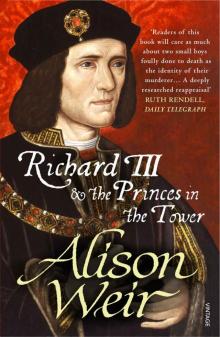 Richard III and the Princes in the Tower
Richard III and the Princes in the Tower Britain's Royal Families: The Complete Genealogy
Britain's Royal Families: The Complete Genealogy The Lady in the Tower: The Fall of Anne Boleyn
The Lady in the Tower: The Fall of Anne Boleyn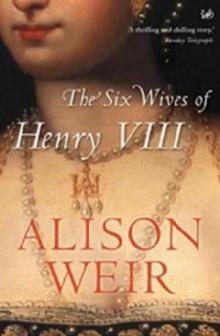 Six Wives of Henry VIII
Six Wives of Henry VIII Elizabeth of York: A Tudor Queen and Her World
Elizabeth of York: A Tudor Queen and Her World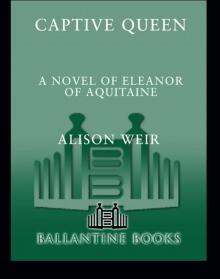 Captive Queen
Captive Queen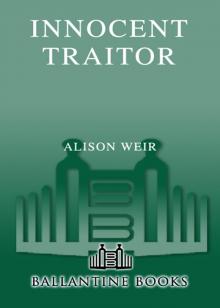 Innocent Traitor
Innocent Traitor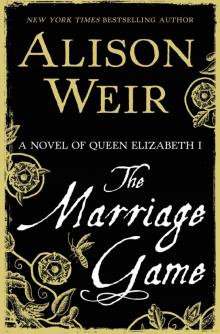 The Marriage Game
The Marriage Game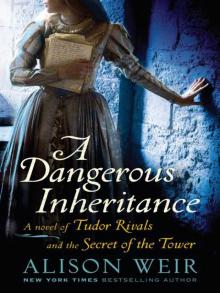 A Dangerous Inheritance
A Dangerous Inheritance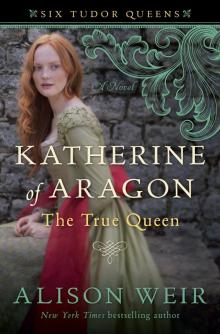 Katherine of Aragón: The True Queen
Katherine of Aragón: The True Queen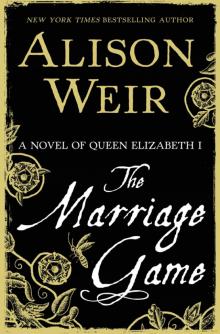 The Marriage Game: A Novel of Queen Elizabeth I
The Marriage Game: A Novel of Queen Elizabeth I Princes in the Tower
Princes in the Tower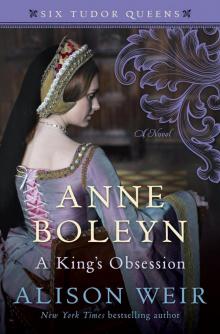 Anne Boleyn: A King's Obsession
Anne Boleyn: A King's Obsession Traitors of the Tower
Traitors of the Tower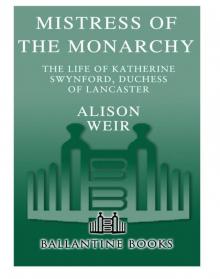 Mistress of the Monarchy: The Life of Katherine Swynford, Duchess of Lancaster
Mistress of the Monarchy: The Life of Katherine Swynford, Duchess of Lancaster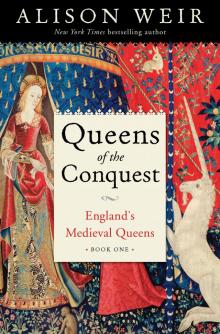 Queens of the Conquest: England’s Medieval Queens
Queens of the Conquest: England’s Medieval Queens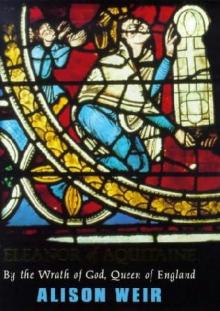 Eleanor of Aquitaine: A Life
Eleanor of Aquitaine: A Life Mary, Queen of Scots, and the Murder of Lord Darnley
Mary, Queen of Scots, and the Murder of Lord Darnley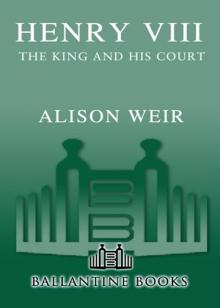 Henry VIII: The King and His Court
Henry VIII: The King and His Court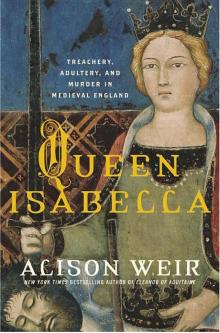 Queen Isabella: Treachery, Adultery, and Murder in Medieval England
Queen Isabella: Treachery, Adultery, and Murder in Medieval England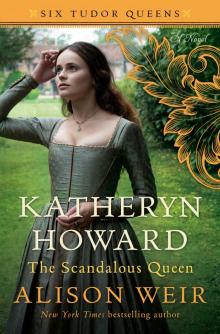 Katheryn Howard, the Scandalous Queen
Katheryn Howard, the Scandalous Queen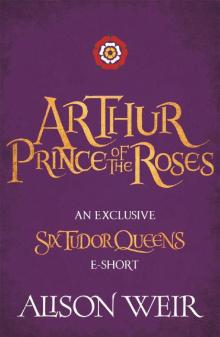 Arthur- Prince of the Roses
Arthur- Prince of the Roses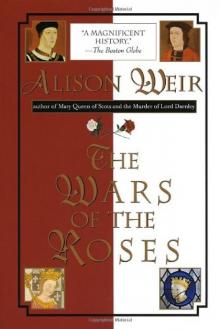 The Wars of the Roses
The Wars of the Roses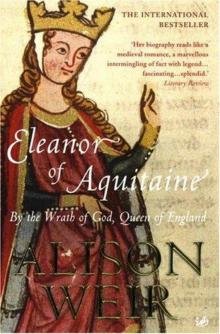 Eleanor of Aquitaine: By the Wrath of God, Queen of England
Eleanor of Aquitaine: By the Wrath of God, Queen of England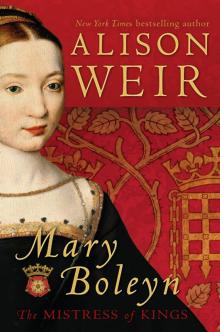 Mary Boleyn: The Great and Infamous Whore
Mary Boleyn: The Great and Infamous Whore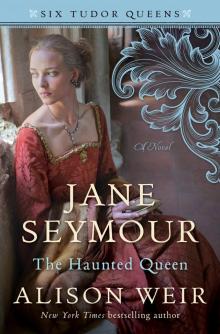 Jane Seymour: The Haunted Queen
Jane Seymour: The Haunted Queen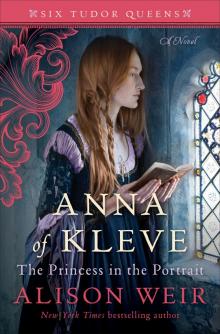 Anna of Kleve, the Princess in the Portrait
Anna of Kleve, the Princess in the Portrait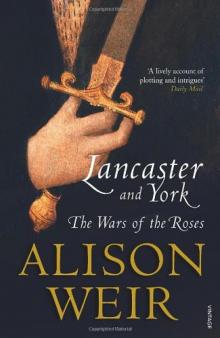 Lancaster and York: The Wars of the Roses
Lancaster and York: The Wars of the Roses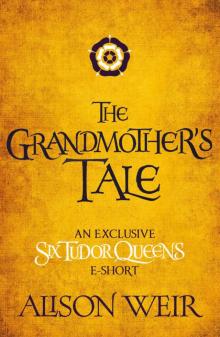 The Grandmother's Tale
The Grandmother's Tale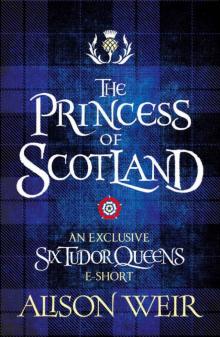 The Princess of Scotland (Six Tudor Queens #5.5)
The Princess of Scotland (Six Tudor Queens #5.5)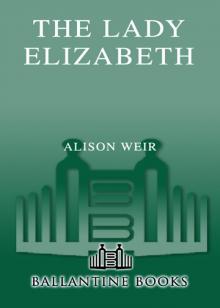 The Lady Elizabeth
The Lady Elizabeth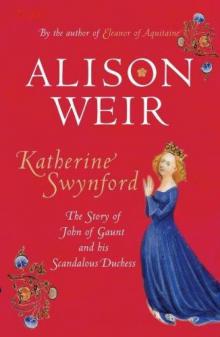 Katherine Swynford: The Story of John of Gaunt and His Scandalous Duchess
Katherine Swynford: The Story of John of Gaunt and His Scandalous Duchess The Curse of the Hungerfords
The Curse of the Hungerfords The Lost Tudor Princess: The Life of Lady Margaret Douglas
The Lost Tudor Princess: The Life of Lady Margaret Douglas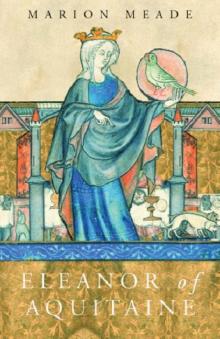 Eleanor of Aquitaine
Eleanor of Aquitaine Mistress of the Monarchy
Mistress of the Monarchy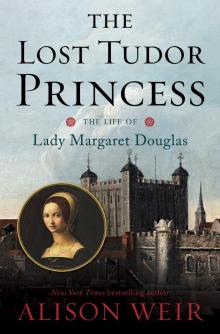 The Lost Tudor Princess
The Lost Tudor Princess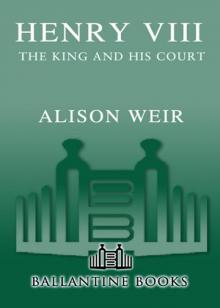 Henry VIII
Henry VIII Anne Boleyn, a King's Obsession
Anne Boleyn, a King's Obsession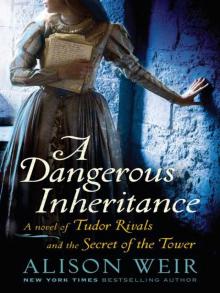 A Dangerous Inheritance: A Novel of Tudor Rivals and the Secret of the Tower
A Dangerous Inheritance: A Novel of Tudor Rivals and the Secret of the Tower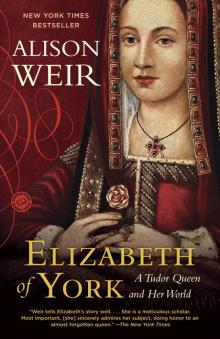 Elizabeth of York
Elizabeth of York Katherine of Aragon, the True Queen
Katherine of Aragon, the True Queen Katherine Swynford
Katherine Swynford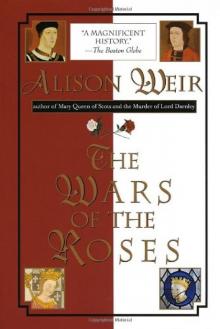 Wars of the Roses
Wars of the Roses Queens of the Conquest
Queens of the Conquest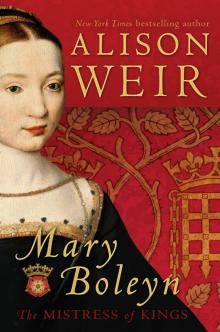 Mary Boleyn
Mary Boleyn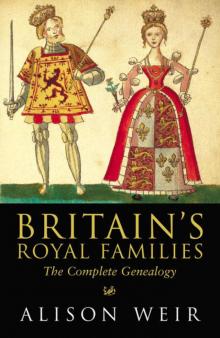 Britain's Royal Families
Britain's Royal Families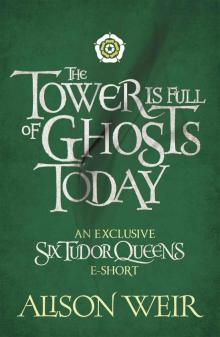 The Tower Is Full of Ghosts Today
The Tower Is Full of Ghosts Today Life of Elizabeth I
Life of Elizabeth I Anne Boleyn A King's Obssession
Anne Boleyn A King's Obssession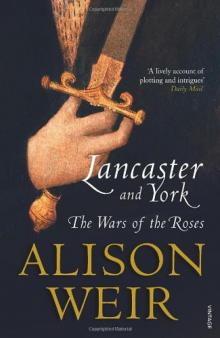 Lancaster and York
Lancaster and York Jane Seymour, the Haunted Queen
Jane Seymour, the Haunted Queen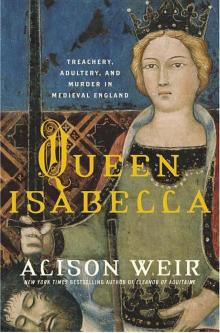 Queen Isabella
Queen Isabella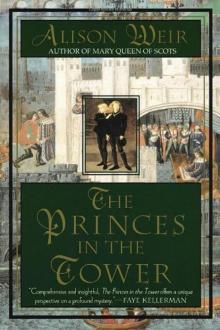 The princes in the tower
The princes in the tower